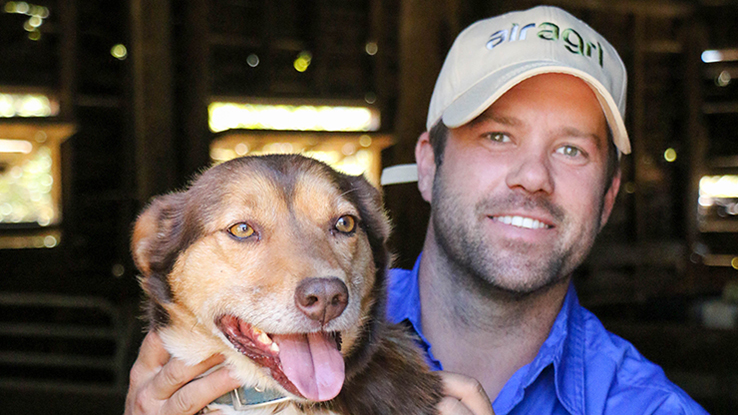 Sheep and cattle producer Paul Diamond believes a collaborative approach is needed to deal with wild dogs.
Sheep and cattle producer Paul Diamond believes a collaborative approach is needed to deal with wild dogs.
Collecting data, working collaboratively and supporting each other are key to staying on the front foot when dealing with wild dog attacks.
This is the message from Victorian sheep and cattle producer Paul Diamond, who has seen first-hand the devastation wreaked by wild dogs on producers’ livelihoods, livestock and mental health.
Paul’s property, ‘Pinnaroo’, is one of eight host properties in MLA’s ‘Less predators, more lambs’ Producer Demonstration Site (PDS), which is coordinated by Agridome Consultancy.
The PDS aims to improve lamb survival and demonstrate best practice in sheep management and predator control in autumn and spring-lambing Merino and first-cross sheep enterprises in north-east Victoria.
“Wild dogs create a variable that’s very difficult to control, so it’s important to be vigilant and keep composure – although at times this can be extremely hard given the severity of the circumstances they create on-farm,” Paul said.
Harsh reality
Paul recalls the trauma of a wild dog attack where, over six weeks, he lost 60 scanned-in-lamb ewes.
On top of the emotional toll, his financial loss was $15,000.
It’s not only wild dogs causing such heartache – Pinnaroo’s location near the shores of popular holiday destination Goughs Bay means visiting pet dogs often roam the area and impinge on the livelihoods of local producers.
These dogs may not be registered with the local council, making it difficult to determine their ownership.
“It takes a huge mental toll – one weekend I lost 30 lambs. I asked the ranger to go around Goughs Bay and check permits but it could have been a dog owned by people who were just visiting for the weekend,” Paul said.
These days, Paul works closely with his local professional wild dog controller for advice on trapping, baiting and shooting, and feels he has access to better support and tools.
“We utilise all the tools for the most effective methods of wild dog control,” Paul said.
Working together
Understanding the behaviour and location of wild dogs is key to predicting attacks and knowing where to place control measures such as baits.
Paul said they have most of their damage in March and April, during the breeding season, as wild dogs are roaming further out of the bush.
Paul uses tools such as the FeralScan Pest Mapping and WildDogScan apps and works with his neighbours to collect data on dog sightings, attacks and control activities.
He said this collaboration is critical.
“The more data points I have – whether it’s my neighbour sighting a wild dog near my property or recently trapping one – the better I can prepare my sheep or cattle pre-lambing and calving,” Paul said.
New tools
Paul and his brother James have harnessed the power of technology to help producers implement a more systematic approach to everyday issues on-farm.
They developed a farm safety software platform, AirAgri.
“AirAgri enhances farm safety and management and taps into the sensitive topic of mental health. I use it to conduct my day-today operations with the confidence that I’ll be getting home to my family every evening.”
An internet of things (IoT) network tracking device is incorporated into the AirAgri platform. This, along with the safety management system, gives Paul peace of mind.
The platform allows producers to manage and implement tasks across different job lists on their farm. Paul uses both AirAgri and FeralScan to log his predatory information.
“FeralScan feeds information back to government on the measures taken in different areas to control these predators, while AirAgri has task allocation so you can pinpoint areas where you want baits to be laid. You can then allocate that to different members on the platform,” Paul said.
Predator Control Management Program
Another important aspect of Paul’s wild dog toolkit is his Predator Control Management Program (PCMP), which he conducts from April to May.
This program was devised by PDS facilitator Dr Matt Mahoney, of Agridome Consultancy.
A PCMP contains:
- everything in one place to ensure comprehensive predator control can be implemented







